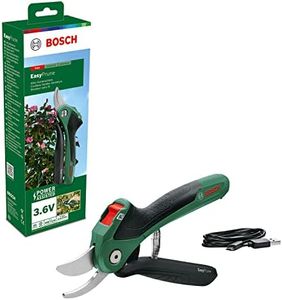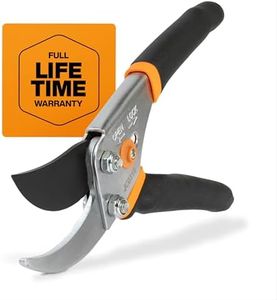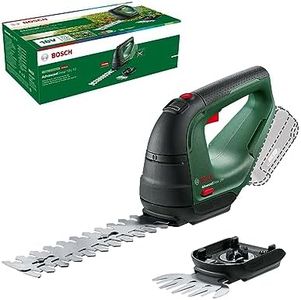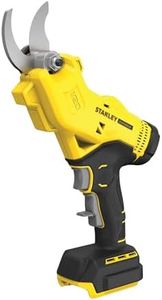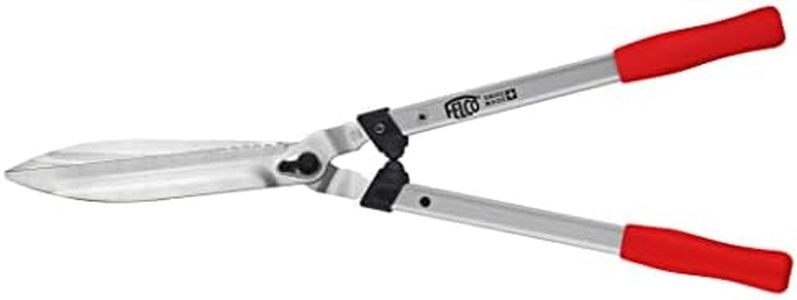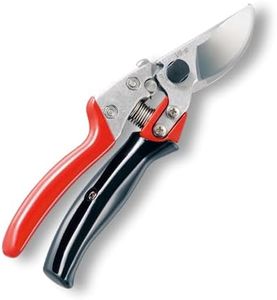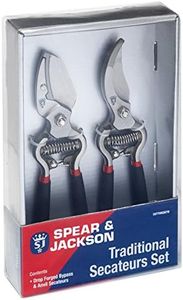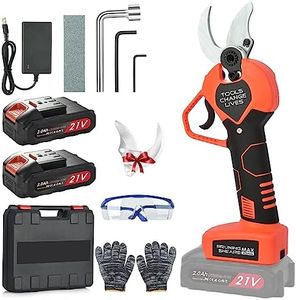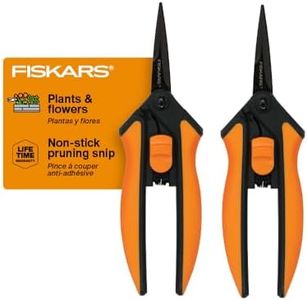We Use CookiesWe use cookies to enhance the security, performance,
functionality and for analytical and promotional activities. By continuing to browse this site you
are agreeing to our privacy policy
10 Best Garden Shears
From leading brands and best sellers available on the web.Buying Guide for the Best Garden Shears
When choosing garden shears, it's important to find a pair that matches both the type of gardening you do and your physical comfort. Whether you're shaping shrubs, trimming flowers, or cutting back tough branches, the right shears can make the job easier, more efficient, and less tiring. Understanding the main features will help you pick shears that feel good in your hand and work well for the plants in your garden.Blade TypeGarden shears come mainly as bypass or anvil types. Bypass blades are like scissors, designed to make clean cuts on live, green plants without crushing them, which is important for maintaining plant health. Anvil blades have one sharp blade that closes onto a flat surface and are better for cutting dead or tough wood because they provide more power but can crush delicate stems. If you mostly trim living plants and flowers, bypass shears are best. For tough, woody stems, consider anvil shears.
Blade MaterialBlades are usually made from stainless steel, carbon steel, or sometimes coated steel. Stainless steel resists rust and doesn't require much maintenance, which is important if you garden in damp conditions or forget to clean your tools often. Carbon steel is sharper and stays sharp longer, but it can rust if you don't take care of it. If you want easy care, go with stainless. If you need very sharp, long-lasting blades and don't mind cleaning, choose carbon steel.
Cutting CapacityCutting capacity refers to the maximum thickness of a stem or branch the shears can cut comfortably. Smaller shears handle softer, thin stems up to about half an inch, ideal for flowers and light trimming. Medium shears usually cut up to three-quarters of an inch and suit general garden tasks. Larger shears can cut up to an inch or more—good for thick branches. Match your shears to the kinds of plants you typically deal with.
Handle ComfortThe design and padding of the handles make a big difference, especially if you use shears for longer periods. Some handles are cushioned or contoured to reduce fatigue and give a better grip, which is important if you have sore wrists or plan to work for a while. Try different handle styles if you can, and choose what feels stable and comfortable in your hand.
Locking MechanismMost garden shears have a way to lock the blades closed for safety and storage. Some locks are easier to flip open and closed than others, which is important if you want to avoid accidents or need to put the shears away quickly. A simple yet secure locking system works best for most people, especially if children might access your tools.
WeightShears range from lightweight to heavier models. Lighter shears are easier to handle for small tasks or if you have less arm strength, but heavier shears might offer more power for tough jobs. Think about how long you'll be using the shears and what tasks you'll be doing most. Choose the weight that feels easy to use for your gardening style.
